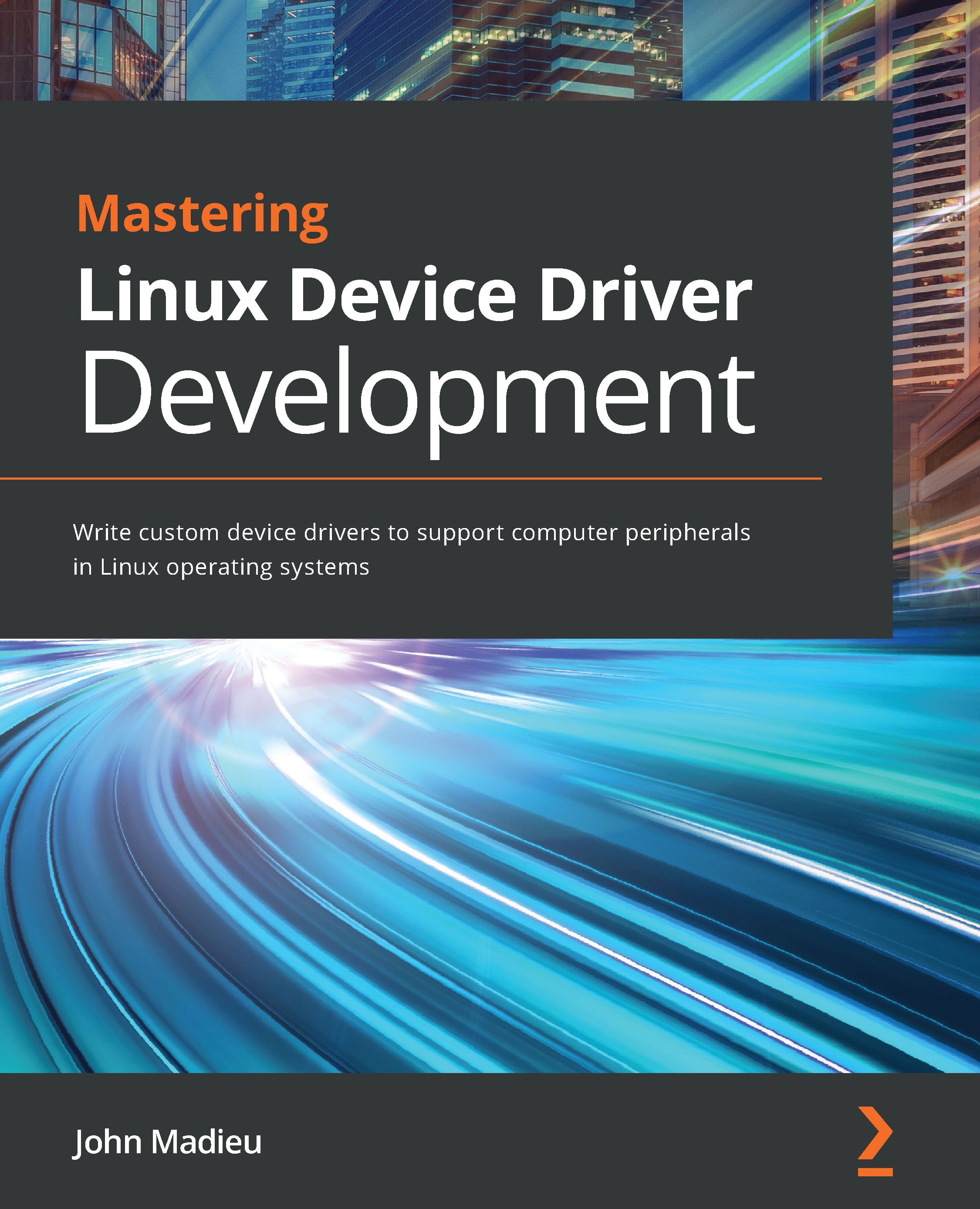- 中图分类号: TP3
- 语种: ENG
- 出版信息: Packt Publishing 2021 647页
- EISBN: 9781789342208
- PISBN-P: 9781789342048
- 原文访问地址:
KG评星
知识图谱评星,是一种基于用户使用的评价体系,综合图书的评论数量、引文数量、Amazon评分以及图谱网络中节点的PageRank值(即考虑相邻节点数量和重要性)等多种因素计算而得出的评价数值。星级越高,推荐值越高。CAT核心级
核心学术资源(CAR)项目作为教图公司推出的一项知识型服务,旨在打造一套科学、有效的图书评价体系,并协助用户制定相应的馆藏建设方案。CAR项目调查和分析12所世界一流大学的藏书数据,以收藏学校的数量确定书目的核心级,核心级越高,代表书目的馆藏价值越高。选取核心级在三级以上,即三校以上共藏的图书作为核心书目(CAT)。Master the art of developing customized device drivers for your embedded Linux systems Key Features • Stay up to date with the Linux PCI, ASoC, and V4L2 subsystems and write device drivers for them • Get to grips with the Linux kernel power management infrastructure • Adopt a practical approach to customizing your Linux environment using best practices Book Description Linux is one of the fastest-growing operating systems around the world, and in the last few years, the Linux kernel has evolved significantly to support a wide variety of embedded devices with its improved subsystems and a range of new features. With this book, you’ll find out how you can enhance your skills to write custom device drivers for your Linux operating system. Mastering Linux Device Driver Development provides complete coverage of kernel topics, including video and audio frameworks, that usually go unaddressed. You’ll work with some of the most complex and impactful Linux kernel frameworks, such as PCI, ALSA for SoC, and Video4Linux2, and discover expert tips and best practices along the way. In addition to this, you’ll understand how to make the most of frameworks such as NVMEM and Watchdog. Once you’ve got to grips with Linux kernel helpers, you’ll advance to working with special device types such as Multi-Function Devices (MFD) followed by video and audio device drivers. By the end of this book, you’ll be able to write feature-rich device drivers and integrate them with some of the most complex Linux kernel frameworks, including V4L2 and ALSA for SoC. What you will learn • Explore and adopt Linux kernel helpers for locking, work deferral, and interrupt management • Understand the Regmap subsystem to manage memory accesses and work with the IRQ subsystem • Get to grips with the PCI subsystem and write reliable drivers for PCI devices • Write full multimedia device drivers using ALSA SoC and the V4L2 framework • Build power-aware device drivers using the kernel power management framework • Find out how to get the most out of miscellaneous kernel subsystems such as NVMEM and Watchdog Who this book is for This book is for embedded developers, Linux system engineers, and system programmers who want to explore Linux kernel frameworks and subsystems. C programming skills and a basic understanding of driver development are necessary to get started with this book.







 京公网安备 11010602104826号
京公网安备 11010602104826号
